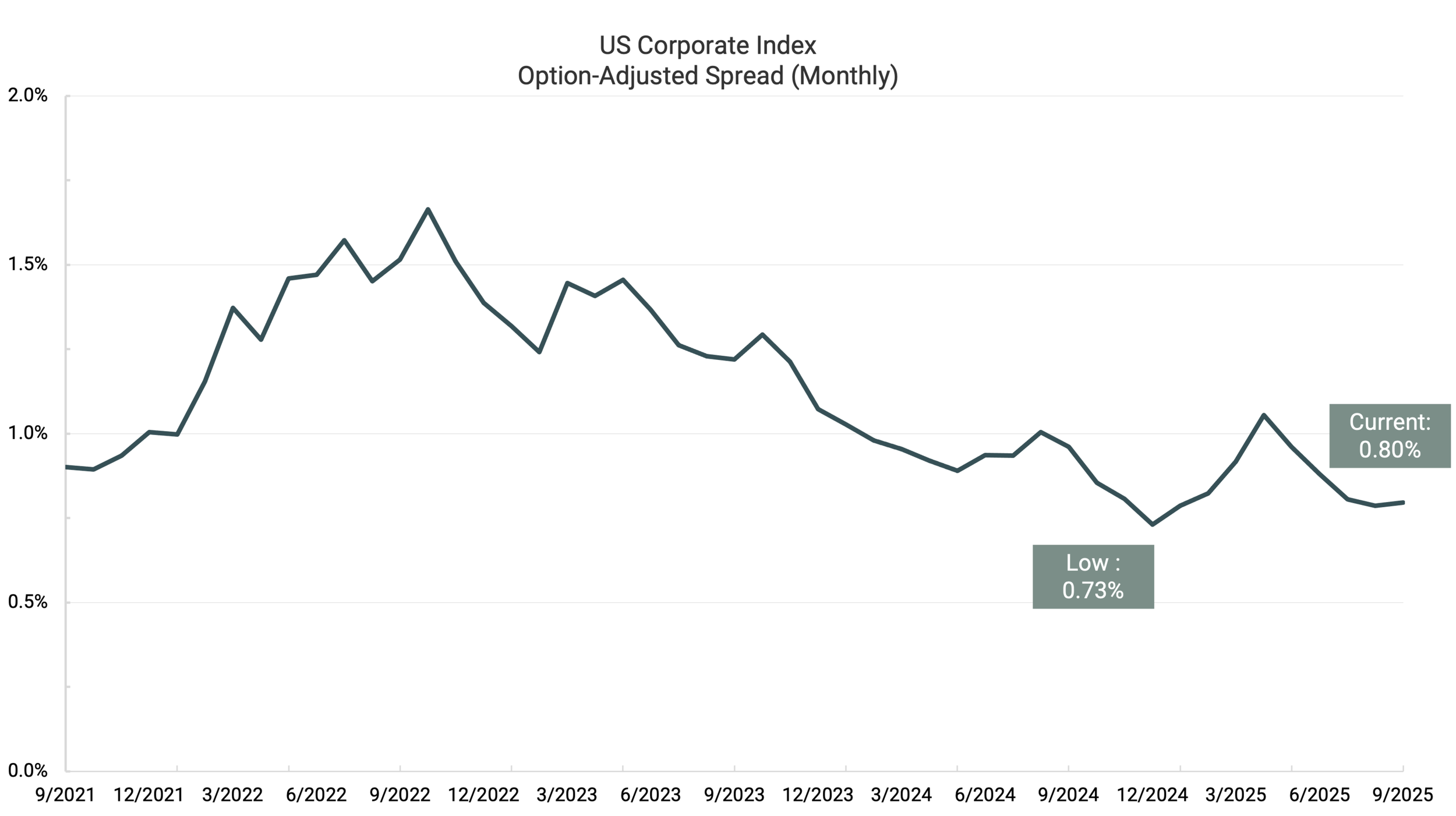Tightening Credit Spreads Create Favorable Refinancing Conditions
Recent tightening in investment-grade corporate credit spreads presents a compelling opportunity for companies looking to refinance an existing credit facility or initiate new corporate borrowing. Credit spreads reached historic lows at the end of 2024 but widened amidst recession and tariff concerns in early 2025. Since then, spreads have narrowed to approximately 80 bps (0.80%) and are hovering near historic lows.
Implications for Corporate Debt Issuance
Credit spreads are measured on a relative basis. Companies issuing or refinancing investment-grade corporate debt can expect their borrowing cost to be priced at a spread over U.S. Treasury bonds with the same duration. Historically, the average spread for the Bloomberg US Corporate Index has been around 130 bps (1.30%) over comparable treasuries.
For example, if 10-year U.S. treasuries are trading at 4.0% and an investment-grade company issues a 10-year bond at a +130 bp spread, their borrowing cost would be approximately 5.30%. In today’s market, with a spread of +80 bps, that same company’s borrowing cost would be reduced to 4.80% - a meaningful 50 basis point savings.
Source: St Louis Fed
Drivers Behind the Current Tightening
Strong Technicals & Investor Demand
While Treasury yields remain relatively elevated, demand for corporate credit continues to be robust. Asset managers are reportedly rotating out of equities into high-grade fixed income, further compressing spreads.Risk Appetite and Market Sentiment
The current credit environment benefits from a broadly favorable macroeconomic outlook. Recession fears have been relatively contained, and markets have had a muted reaction to geopolitical and tariff-related uncertainty. Though credit spreads have experienced occasional volatility, they have remained historically tight.
Considerations in the Current Environment
Limited Room for Further Tightening
With spreads near historic lows, the potential for additional compression is limited. The incremental yield pickup of additional tightening is minimal, while downside risk from spread widening becomes more pronounced.Macroeconomic Headwinds
Signs of faltering macroeconomic growth, such as weaker than expected corporate earnings, unexpected defaults, or accelerating inflation, could prompt lender repositioning and spread widening.Supply & Duration Pressures
A surge in corporate issuance or an extension of average duration could stress liquidity and increase sensitivity to broader interest-rate movement.Shifts in Lender Appetite Lender appetite for debt issuance can change quickly if there is a repricing of risk, potentially leading to abrupt changes in pricing or availability.
Strategic Implications for Refinancing and Origination
At +80 bps, the investment-grade credit spread environment remains favorable for both refinancing existing facilities and originating new corporate credit. Companies with existing credit facilities maturing in the next 12-24 months should consider refinancing in the current credit spread environment, as doing so may generate substantial savings in long-term borrowing costs.
Engaging an advisor to lead a competitive refinancing process ensures your company receives the most favorable terms available in today’s market.
Learn More about Refinancing Corporate Debt
Keene Advisors helps CFOs, business owners, and corporate finance teams evaluate and execute strategic refinancing decisions. Our team has represented a wide range of clients on debt refinancing transactions. Recently, we published a playbook on understanding credit facility financing, including best practices for projecting and managing liquidity, typical covenant structures, and guidance on how to negotiate the most competitive terms for your company.



